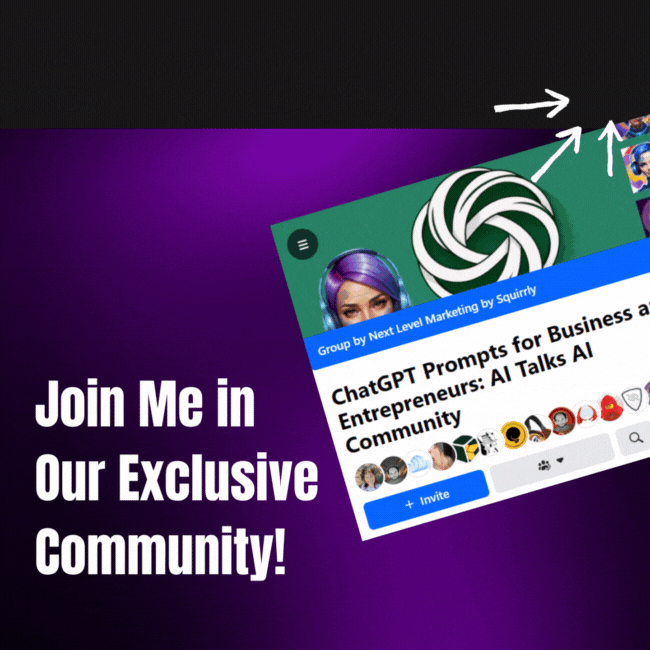Ever wonder why some businesses seem to effortlessly attract leads while others struggle to get a single email sign-up?
It’s not magic; it’s strategy. In today’s digital age, having a cache of effective lead generation ideas is more than just a competitive edge—it’s a necessity.
From sparking interest to nurturing prospects into customers, the right strategies can transform your business’s growth trajectory.
What if I told you that by the end of this post, you’d have a toolkit of creative and proven lead-generation tactics at your disposal? Tactics that not only capture attention but convert curiosity into concrete leads.
Stick around, because you’re about to uncover some of the most impactful strategies to fuel your lead-generation efforts like never before.

The Quest for Lead Generation Ideas
So, let’s start with a simple question: Why do we obsess over lead generation? In the simplest terms, leads are the lifeblood of our businesses. They’re potential customers who have shown interest in what we offer but haven’t made a purchase yet.
Our job is to nurture these leads, guiding them down the magical path to becoming paying customers.
But here’s the kicker: Generating leads can be as tricky as convincing a cat to take a bath.
It requires creativity, patience, and a bit of marketing wizardry. So, without further ado, let’s explore some top-notch lead generation ideas that can help your business thrive.
Content is King, but Engagement is Queen
When we say “content is king,” we’re talking about the foundation of any digital marketing strategy. But let’s take it a step further—because in a world where everyone is vying for attention, it’s not enough to just produce content. Your content must engage, resonate, and leave your audience wanting more.
Here’s how to ensure your content wears the crown and your engagement strategy secures the throne:
1. Leverage Storytelling in Your Content
People love stories. They’re wired to connect with narratives that evoke emotions, teach lessons, or provide entertainment. So, how can you infuse storytelling into your blogs, videos, or infographics? Start with a problem your audience faces, narrate the journey of overcoming that problem, and conclude with a solution—ideally, one that your product or service offers. The key here is authenticity; share real stories, customer testimonials, or even behind-the-scenes looks into your process.
2. Create Interactive Content
Interactive content is a game-changer. Think quizzes, polls, surveys, or interactive infographics that not only impart valuable information but also engage users in a dynamic way. For example, a quiz titled “Which [Your Product/Service] is Right for You?” not only informs the user about your offerings but also provides personalized value, making them more likely to engage with your brand further.
3. Utilize User-Generated Content (UGC)
There’s something inherently trust-building about seeing real people use and talk about your product or service. Encourage your customers to share their experiences on social media and tag your brand. Host contests where entries involve creating content about your product. Not only does this provide you with authentic marketing material, but it also deeply engages your community by making them a part of your brand’s story.
4. Ask and You Shall Receive
The simplest engagement strategy is often overlooked: ask your audience to engage. End your blogs with a question that prompts thought and invites comments. Use calls-to-action (CTAs) in your videos encouraging viewers to share their opinions. In your infographics, include prompts that guide readers to share the infographic on social media if they found it helpful. Engagement is a two-way street; sometimes, all you need to do is open the lane.
5. Feedback Loops are Gold
Finally, actively seek and listen to feedback. Use comments, social media interactions, and direct feedback to gauge what types of content resonate most with your audience. Then, iterate on that. Showing your audience that you value and act on their feedback not only improves your content strategy but also deepens engagement and loyalty.
By focusing on engagement as much as content creation, you transform your content from mere information to a compelling conversation. This approach not only attracts leads but also builds a community around your brand, making every piece of content you produce a building block in your relationship with your audience.

The Power of Social Media
Ah, social media—the realm where connections are made, trends are born, and brands can truly flourish. With billions of users scrolling through feeds daily, social media stands as a formidable platform for lead generation.
But how can you harness its power beyond the usual meme-sharing and still make a significant impact? Let’s break down the strategies that can turn your social media presence into a lead-generating powerhouse.
1. Craft Share-Worthy Content
To stand out on social media, your content must be compelling enough that people want to share it. This goes beyond promotional posts; think about how you can provide value in a way that resonates with your audience’s interests and challenges. Educational content, industry insights, inspirational stories, and even well-crafted memes related to your niche can encourage sharing. The more your content is shared, the wider your reach and potential for generating leads.
2. Dive Into Social Listening
Social listening involves monitoring social media channels for mentions of your brand, competitors, product, and relevant keywords. It’s a treasure trove of insights into what your audience cares about, their pain points, and what they’re saying about you. Use this information to tailor your content and engagement strategies, address concerns proactively, and jump into conversations where you can offer value. This not only increases visibility but also positions your brand as helpful and attentive—qualities that attract leads.
3. Leverage the Power of Contests and Giveaways
Who doesn’t love winning something? Contests and giveaways are fantastic for generating excitement and engagement on social media. The key is to make participation valuable in itself (with engaging content or community recognition) and the rewards desirable. Make sure that entering the contest involves an action that benefits your lead generation goals, such as submitting an email address, following your profile, or sharing the contest with friends.
4. Optimize Your Profiles for Lead Generation
Your social media profiles should make it easy for potential leads to move from interest to action. Ensure that your bio includes a clear value proposition and a link to your website or a specific landing page.
Consider using features like Instagram’s “Link in Bio” or Facebook’s call-to-action buttons to streamline this process.

Webinars and Online Workshops
We couldn’t talk about lead generation ideas, and not include this.
Webinars and online workshops are powerful tools for sharing expertise, building brand authority, and, most importantly, generating leads. These platforms offer a unique blend of education and engagement, allowing you to connect with your audience on a deeper level.
Plus, it’s an excellent opportunity to showcase your products or services in action.
Here’s how to leverage webinars and workshops to not only share your knowledge but also turn participants into promising leads.
1. Choose Topics That Resonate
The success of your webinar or workshop starts with selecting a topic that resonates with your target audience. It should address a specific problem, trend, or interest relevant to your industry. Use social listening, customer feedback, and industry forums to identify pain points and questions your audience has.
The more your topic resonates with them, the more likely they are to sign up and attend.
2. Promote Your Event Creatively
To attract participants, you need a promotional strategy that stands out. Use a mix of email marketing, social media, blog posts, and even partnerships with influencers or other brands to spread the word.
Consider creating a compelling teaser video or an infographic that highlights what attendees will learn. The goal is to spark curiosity and convey the value of your webinar or workshop clearly and concisely.
3. Make Registration a Breeze
The sign-up process for your event should be as straightforward as possible. Create a simple, user-friendly registration page that captures essential information, including email addresses.
To encourage sign-ups, emphasize the exclusive benefits of attending your webinar or workshop. You can also offer early bird registration discounts or special bonuses to the first few registrants to create a sense of urgency.
4. Deliver High-Quality Content
The content of your webinar or workshop is crucial. It needs to be engaging, informative, and relevant. Use a mix of presentation slides, live demos, and real-life case studies to keep your audience engaged. Remember, the goal is to provide so much value that participants leave feeling educated, inspired, and curious about your products or services.
5. Engage Your Audience Throughout
Interactive elements can significantly enhance the engagement level of your webinar or workshop. Incorporate Q&A sessions, polls, and interactive exercises to keep your audience involved.
This not only makes the experience more enjoyable but also helps you gather valuable insights about your participants’ interests and preferences.
6. Follow Up Promptly
After the event, it’s crucial to follow up with attendees. Send a thank-you email that includes a link to the webinar recording, additional resources related to the topic, and a call-to-action (CTA) that guides them to the next steps—whether that’s scheduling a consultation, signing up for a free trial, or accessing exclusive content.
For those who registered but didn’t attend, consider sending a different message encouraging them to watch the replay and get in touch if they have any questions.
7. Leverage the Content Beyond the Live Event
Your webinar or workshop doesn’t have to end when the live session does. Repurpose the content into blog posts, infographics, or even a series of short videos.
This not only maximizes the reach of your original content but also continues to attract leads long after the event is over.
Webinars and online workshops offer a unique opportunity to showcase your expertise and directly engage with your audience. By delivering valuable content and fostering interactive discussions, you can build trust with your participants, making them more likely to become interested leads.
Remember, the key to converting participants into leads is not just the information you provide but the relationships you build and the actions you encourage during and after the event.

Referral Programs: Word-of-Mouth in the Digital Age
In an era where consumers are bombarded with countless advertising messages every day, the genuine recommendation of a friend or family member stands out as a beacon of trust.
Referral programs harness this power of personal endorsement, turning your satisfied customers into passionate advocates for your brand.
Here’s how to create a referral program that not only resonates with your audience but also turns them into a dynamic force for lead generation.
1. Design an Irresistible Offer
For a referral program to be successful, the offer must be compelling to both the referrer and the referee. This could be a discount, a free product, additional services, or access to exclusive content.
The key is to understand what motivates your customers and design offers that feel valuable to them. Remember, a great offer encourages ongoing participation, turning a one-time referral into a habit.
2. Make it Easy to Share
The simpler the referral process, the more likely people are to participate.
Integrate your referral program seamlessly into your product or service experience. Use clear, concise instructions and ensure the referral mechanism—be it a link, code, or referral form—is straightforward and easily accessible.
Consider incorporating social sharing options to allow your customers to spread the word with just a few clicks.
3. Leverage Multiple Channels
To maximize the reach and impact of your referral program, promote it across various channels. This includes your website, social media platforms, email newsletters, and even within the product or service itself.
Tailor your message to each channel and highlight the benefits of participating in the referral program. The more touchpoints you create, the more likely you are to engage potential referrers.
4. Track and Optimize
As with any marketing initiative, it’s crucial to track the performance of your referral program. Monitor metrics such as participation rates, conversion rates, and the overall impact on customer acquisition and revenue. Use this data to refine and optimize your program over time.
Testing different offers, messaging, and promotional strategies can help you discover what resonates best with your audience.
5. Celebrate and Share Success
Sharing the success stories of your referral program can further fuel participation. Highlight top referrers, share testimonials, or showcase how the rewards have benefited both referrers and referees.
This not only provides social proof but also encourages others to get involved. Celebrating these successes fosters a sense of community and reinforces the value of your program.
Referral programs are a potent tool for leveraging the trust and enthusiasm of your existing customers to attract new leads.
By creating a compelling, easy-to-use program and promoting it effectively, you can unlock the power of word-of-mouth marketing in the digital age. The key is to continuously engage your participants, optimize based on performance insights, and celebrate the victories along the way.
With the right approach, your referral program can become a significant driver of growth and customer loyalty for your business.

Wrapping It Up
Whether you’re running a startup from your garage or managing a team in a flashy downtown office, the quest for fresh, effective lead-generation ideas is never-ending.
But here’s the thing: Lead generation doesn’t have to be a chore. With the right strategies and a bit of creativity, it can be an exciting part of your marketing plan. And remember, the key to success is experimentation.
Try different lead generation ideas, mix and match strategies, and see what works best for your business.
So, what do you think? Ready to tackle your lead generation challenges head-on? I’d love to hear your thoughts, experiences, and maybe a few of your own lead-generation ideas.
Drop a comment, share this post, and let’s keep the conversation going.
And hey, don’t stop here!
If you’re thirsting for more marketing knowledge, be sure to check out some of the other articles on our blog. We’ve got insights on everything from search engine optimization to the use of AI in marketing.
Who knows? You might just find the inspiration you need to take your marketing game to the next level.
Catch you on the flip side! 🚀













